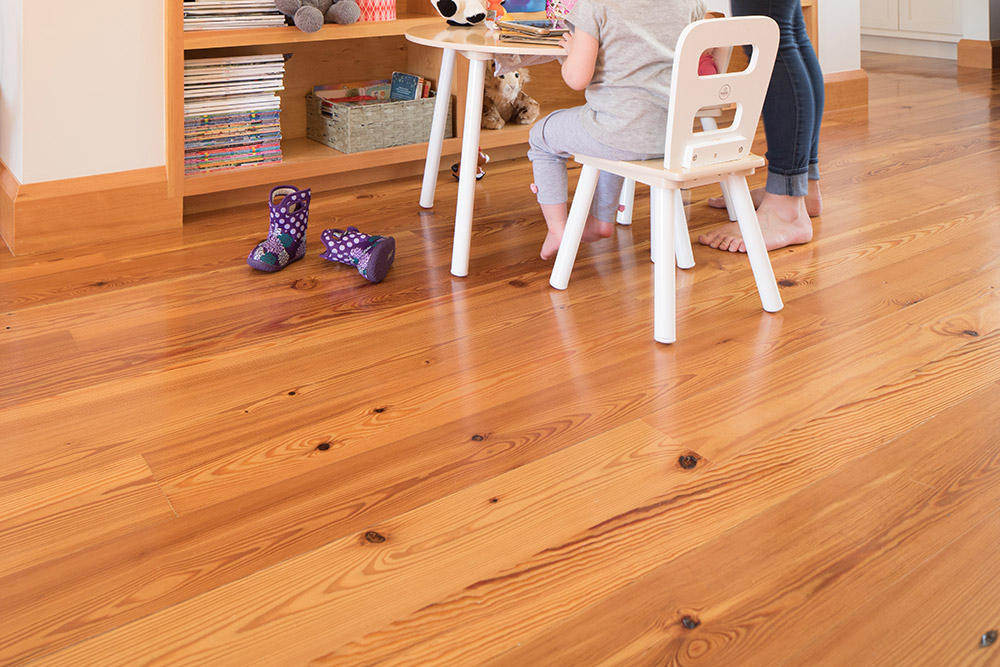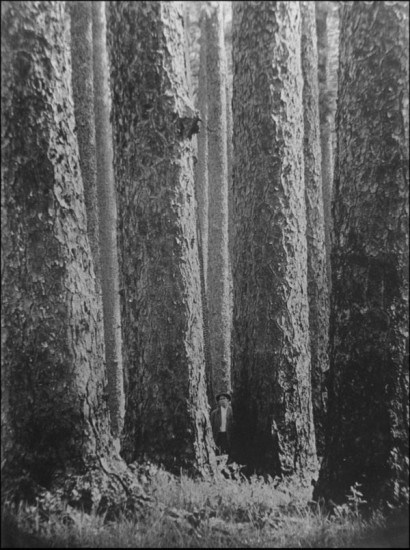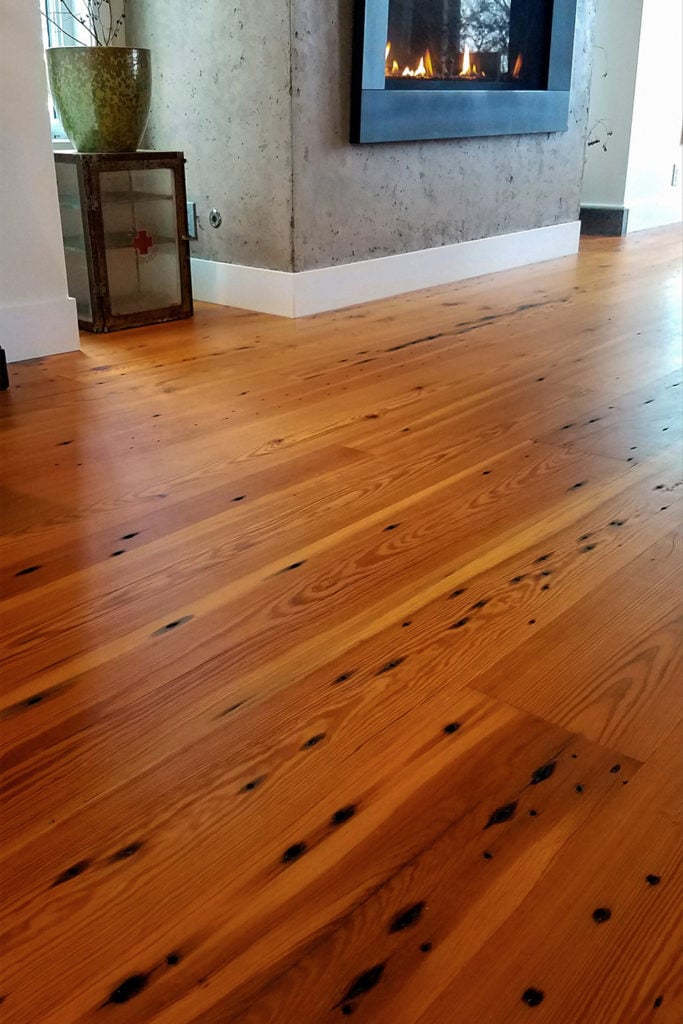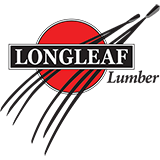
Reclaimed Heart Pine flooring is an investment in the future comfort, appearance, and real value of your home. Long considered one of the finest American woods sawn for flooring, Heart Pine balances the color, tone, and richness of a softwood with the strength and durability of a hardwood, completing the package with incredible straight grain and a solid yet forgiving feel underfoot.
Heart Pine Flooring
Logged to near extinction by the early 20th century, genuine Heart Pine flooring is now available only as a reclaimed wood product. Over the past few decades, as the reclaimed lumber industry has grown, a number of similar (but very different) flooring products have been introduced to the market, often confusing consumers and diluting the quality of real Heart Pine flooring. This blog post is intended as a guide to educate consumers on the differences between Heart Pine flooring and other southern yellow pine flooring products.
What is Heart Pine flooring and why does it matter?
 Heart Pine is the heartwood of the longleaf pine (Pinus palustris) tree. Because of properties particular to this species of pine, Heart Pine wood is extremely hard, strong, and stable, making it an excellent wood for flooring. Flooring milled from Heart Pine boards produces incredible color, tone, and hardness. Reclaimed longleaf pine almost matches the hardness scores of hardwoods such as red oak, and some pieces of particularly dense and slow-growing reclaimed Heart Pine can exceed hardwood hardness levels.
Heart Pine is the heartwood of the longleaf pine (Pinus palustris) tree. Because of properties particular to this species of pine, Heart Pine wood is extremely hard, strong, and stable, making it an excellent wood for flooring. Flooring milled from Heart Pine boards produces incredible color, tone, and hardness. Reclaimed longleaf pine almost matches the hardness scores of hardwoods such as red oak, and some pieces of particularly dense and slow-growing reclaimed Heart Pine can exceed hardwood hardness levels.
Old-growth Heart Pine is no longer commercially available as a timber crop, meaning real Heart Pine flooring is always reclaimed. To produce the incredible slow-growth properties of Heart Pine flooring, high-quality beams are reclaimed from industrial buildings as they are demolished. Turn-of-the-century mill buildings, warehouses, and factories were originally framed with large beams sawn from old-growth longleaf pine, making flooring manufactured from these reclaimed beams a completely authentic Heart Pine product.
Why is there confusion?
 Because the reclaimed flooring industry operates without defined criteria or standards for Heart Pine products, there are a number of ways in which a consumer can easily become confused. Interchangeable terms, regional colloquial differences, and a lack of standardization in the industry are the most common ways consumers end up with a product other than that which they intended to purchase.
Because the reclaimed flooring industry operates without defined criteria or standards for Heart Pine products, there are a number of ways in which a consumer can easily become confused. Interchangeable terms, regional colloquial differences, and a lack of standardization in the industry are the most common ways consumers end up with a product other than that which they intended to purchase.
Products commonly confused with real Heart Pine are floorings sawn from members of the southern yellow pine family - all trees related to the longleaf pine, but species which produce vastly different woods. These species include shortleaf pine, loblolly pine, and slash pine. While beautiful in their own right, and also an environmentally sound decision when milled from reclaimed sources, these floors are not Heart Pine and should not be confused as such.
This confusion often ends up disappointing or inconveniencing the consumer in a number of ways. Some of the most common disappointments include the customer....
- paying for Heart Pine and receiving low-grade loblolly, slash, or shortleaf pine.
- receiving a floor that is significantly softer than they believe, leading to faster wear in a home.
- receiving a floor that interacts with their planned finish differently than Heart Pine would.
- patching a floor with boards that are historically inaccurate, thus invalidating a historic renovation.
- patching or matching a floor with boards that are aesthetically incompatible, resulting in mismatched grain and color, and damaging continuity and wholeness in a floor.
- patching or matching a floor with boards that are structurally incompatible, leading to inconsistencies in wear.
Questions to ask your lumberyard or flooring salesperson:
Make sure you're buying old-growth Heart Pine wood.

Remember!
Heart Pine Flooring Is…
…sawn from longleaf pine.
…reclaimed.
…dense (8 growth rings per inch or greater).
